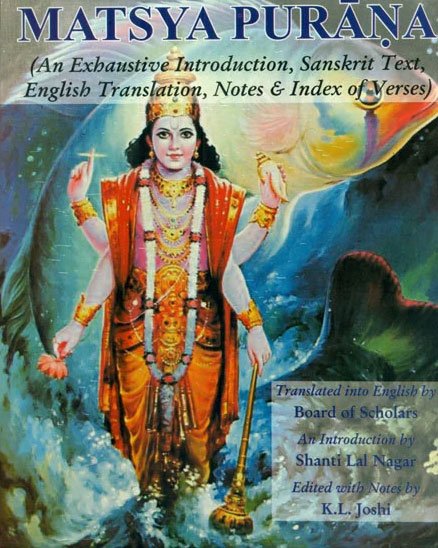The Matsya Purana (critical study)
by Kushal Kalita | 2018 | 74,766 words | ISBN-13: 9788171103058
This page relates ‘Vratas described in the Matsyapurana (Introduction)’ of the English study on the Matsya-purana: a Sanskrit text preserving ancient Indian traditions and legends written in over 14,000 metrical verses. In this study, the background and content of the Matsyapurana is outlined against the cultural history of ancient India in terms of religion, politics, geography and architectural aspects. It shows how the encyclopedic character causes the text to deal with almost all the aspects of human civilization.
Part 4.2 - Vratas described in the Matsyapurāṇa (Introduction)
The Matsyapurāṇa containing twenty thousand stanzas is the store house of historical, political, social, geographical, religious data of ancient India. It has exhibited the religious part in a considerable length. It has depicted the religious customs of that time like vrata, upavāsa, dāna, śrāddha, tīrtha etc. to a great extent. Among all the descriptions of religious activities described in the Matsyapurāṇa, vratas appear to hold the exalted position of being the main custom of that age. As many as ninty (90) vratas are described here. It is mentioned in this Purāṇa that the great sages preferred vratas or tapas to Vedic sacrifices which involve killing of animals.[1] They believed that vrata takes a man to heaven. The emphasis of the Matsyapurāṇa on vratas is regarded as a special feature of Purāṇic religion and deserves a thorough study. The main objectives of these vratas are purification and enrichment of the individual and social life by means of positive action.
Among the many vratas described in this Purāṇa some are practised even today. There are again some vratas which are not found to be prevalent now-a-days. But from the elaborate description of those vratas found in this Purāṇa it can be assumed that during the time of the Purāṇa these vratas held importance in the society. Here, in this chapter those vratas will be discussed first which are commonly observed by the people all over India, even today. Some other vratas, which, though not practised now-a-days, appear to possess much importance in the Purāṇa, will also be discussed here in detail.
Footnotes and references:
[1]:
Matsyapurāṇa,143.33-34
